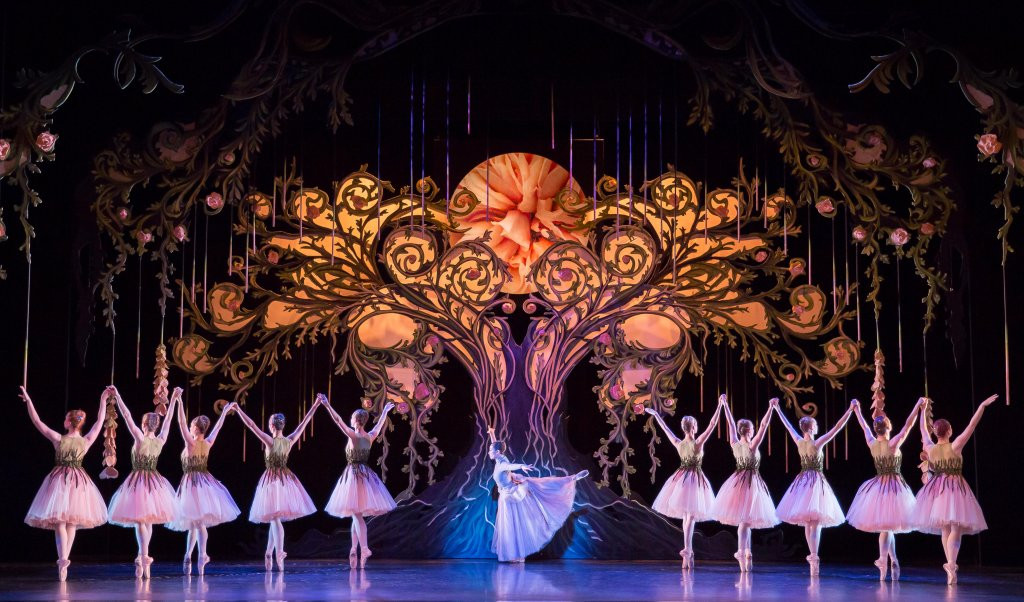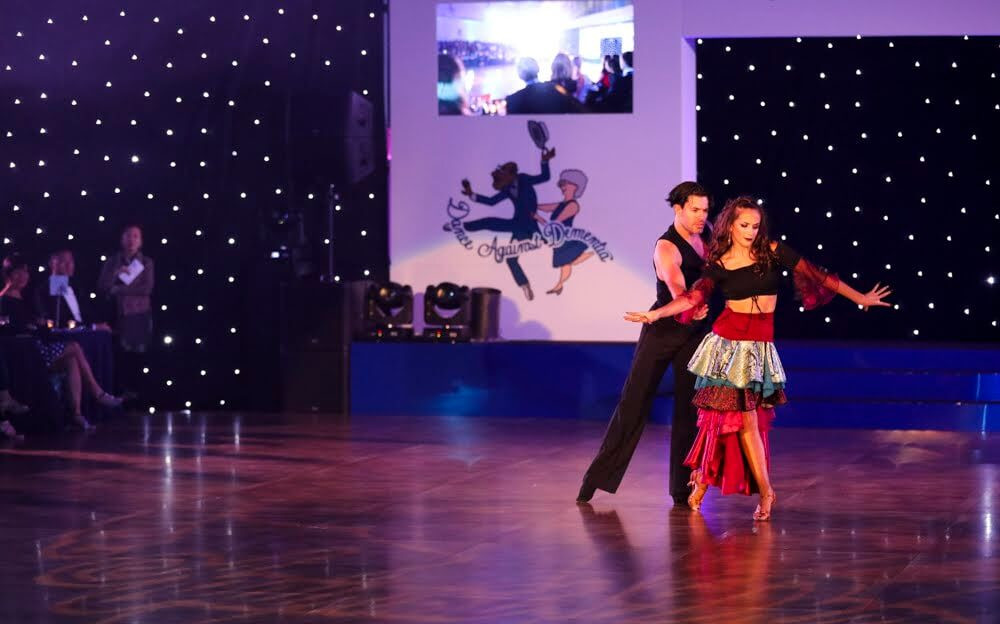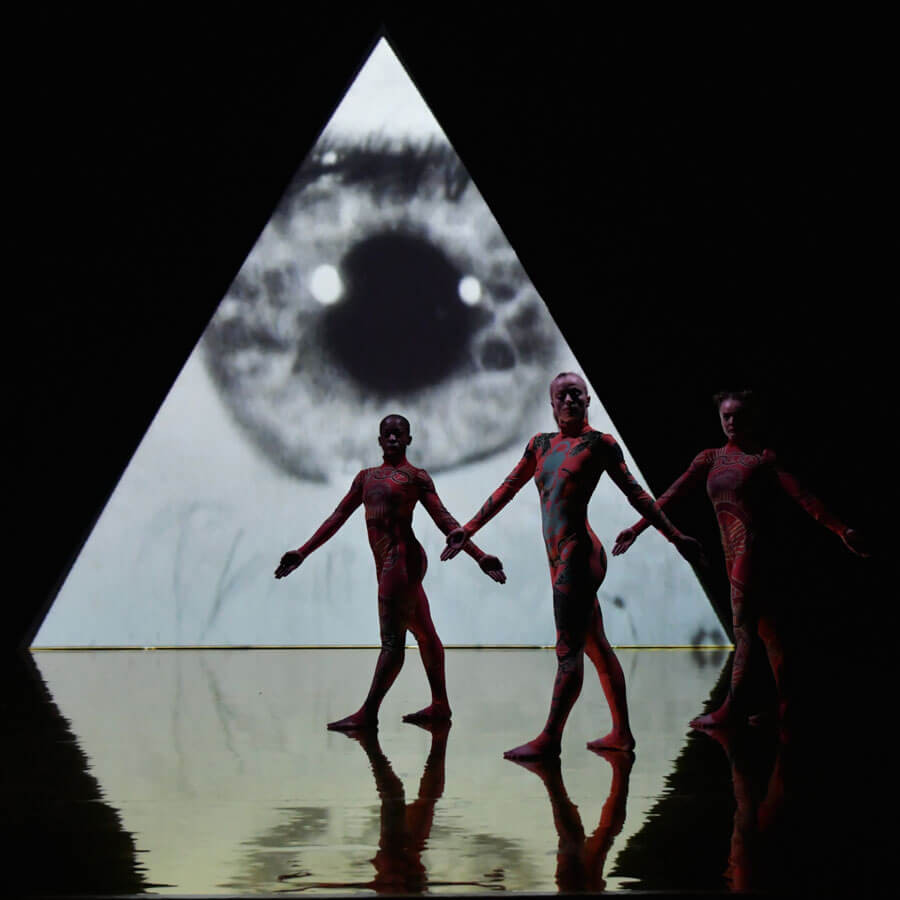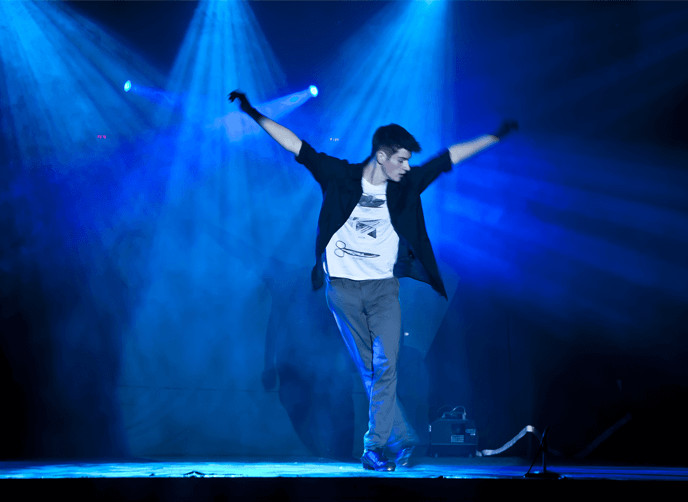 10 most popular types of dance
10 most popular types of dance
Dance, a universal language expressed through rhythmic movement, has been an integral part of human culture since the dawn of civilization. Evidence suggests that dance has been practiced for over 30,000 years, evolving and diversifying alongside societal changes and cultural exchanges. From ancient rituals to modern-day expressions, dance has taken on countless forms, each with its unique history, techniques, and significance.
Over centuries, various dance styles have emerged, transformed, and blended, resulting in the diverse range of dance genres we recognize today. This article delves into some of the most popular and influential Different Forms Of Dancing, exploring their characteristics and origins.
Top Dance Genres Around the World
- Ballet
- Ballroom
- Contemporary
- Hip Hop
- Jazz
- Tap Dance
- Folk Dance
- Irish Dance
- Modern Dance
- Swing Dance
Ballet: The Epitome of Grace and Technique
Ballet, a highly formalized and elegant dance form, originated during the Italian Renaissance in the 15th century. It further developed in France and Russia, evolving into a theatrical art form intended for public performance. Characterized by precise and graceful movements, ballet is often performed to classical music and tells stories through choreographed steps and gestures.
Ballet productions can range from lavish spectacles with elaborate costumes and sets to minimalist performances focusing purely on movement and technique. Key elements of ballet include turnout, pointed toes, and high extensions, emphasizing lightness and ethereal qualities.
Today, ballet is a globally recognized and technically demanding dance genre with several prominent subgenres. These include classical ballet, romantic ballet, neoclassical ballet, and contemporary ballet, each showcasing distinct styles and artistic approaches. Ballet training is rigorous and often begins at a young age, with dancers adhering to established methods such as the Cecchetti, Bournonville, Vaganova, French School, Royal Academy of Dance, and Balanchine techniques, all taught in prestigious dance academies worldwide.
For ballet dancers, the dance floor is a crucial element. Harlequin Floors has engineered specialized ballet dance floors that provide the perfect balance of traction and slip resistance, ensuring safety and enabling the fluid movements essential to ballet. Harlequin Cascade, a popular choice, can be installed over sprung floors for enhanced performance and injury prevention. Complementing their flooring solutions, Harlequin Floors also offers professional-grade ballet barres, available in wall-mounted, floor-mounted, and freestanding options.
 scottish ballet | Professional Sprung & Vinyl Dance Floors | Harlequin Floors
scottish ballet | Professional Sprung & Vinyl Dance Floors | Harlequin Floors
Scottish Ballet dancers performing on Harlequin Cascade dance floor, showcasing the elegance and fluidity of ballet.
Ballroom: Partnered Grace and Social Elegance
Ballroom dance, a social and competitive partner dance form, traces its origins back to 16th-century France. Initially a dance of the European courts, it has evolved into a diverse genre encompassing both social and competitive styles. Often used as an umbrella term for partner dancing, ballroom dance is broadly categorized into two main styles: Standard (Smooth) and Latin (Rhythm).
The Standard category includes dances like the Waltz, Tango, and Foxtrot, characterized by elegant and flowing movements. The Latin category features dances such as the Pasodoble, Bolero, and Samba, known for their passionate and rhythmic nature. Ballroom dancing is a popular competitive dance form, often referred to as dancesport, with competitions held globally. It emphasizes posture, frame, and synchronized movements between partners.
Given the variety within ballroom dancing, dancers require a floor that accommodates different styles. Harlequin Fiesta and the specialized Harlequin Liberty Ballroom dance floor are excellent versatile options, providing a surface suitable for all ballroom styles. Notably, Harlequin Liberty Ballroom is the floor of choice for the BBC’s ‘Strictly Come Dancing’ and professional World Ballroom Dance Champion, Christopher Hawkins, highlighting its quality and performance.
 RHH Dance Against Dementia MattChungPhoto lo res 40 | Professional Sprung & Vinyl Dance Floors | Harlequin Floors
RHH Dance Against Dementia MattChungPhoto lo res 40 | Professional Sprung & Vinyl Dance Floors | Harlequin Floors
Dancers at “Dance Against Dementia” event performing on Harlequin Liberty Ballroom floor, demonstrating the social and engaging nature of ballroom dance.
Contemporary: Expressive Freedom and Innovation
Contemporary dance emerged in the mid-20th century and has become a dominant and technically sophisticated dance form, particularly popular in the US and Europe. It draws inspiration from classical ballet, modern, and jazz dance styles, but distinguishes itself by its emphasis on expressiveness and innovation. Contemporary dance is known for incorporating elements from a wide spectrum of dance genres, resulting in a fluid and dynamic style.
Key characteristics of contemporary dance include a focus on torso and leg strength, contract and release techniques, fall and recovery movements, and extensive floor work. Performances often feature unpredictable shifts in speed and rhythm, adding to its dynamic and emotionally resonant quality. Contemporary dance prioritizes a dancer’s emotional connection to the movement and often explores abstract themes and personal expression.
The demanding physicality of contemporary dance necessitates a floor that provides adequate shock absorption. Harlequin’s ‘triple sandwich’ Harlequin Activity sprung floor, when paired with various vinyl dance floors, creates an ideal surface for contemporary dancers, protecting them from impact and supporting their dynamic movements.
 Gold Hi Shine MK ULTRA3 credit Brian Slater | Professional Sprung & Vinyl Dance Floors | Harlequin Floors
Gold Hi Shine MK ULTRA3 credit Brian Slater | Professional Sprung & Vinyl Dance Floors | Harlequin Floors
Contemporary dancer Rosie Kay performing on Harlequin Hi-Shine floor, highlighting the expressive and dynamic movements characteristic of contemporary dance.
Hip Hop: Urban Rhythms and Street Style
Hip-hop dance encompasses a range of street dance styles that developed alongside hip hop music and culture. Originating in the early 1970s in New York City and California, hip hop dance evolved from Funk and the emergence of breakbeat music. It is deeply rooted in urban communities and reflects social and cultural narratives.
Major styles within hip-hop dance include Breaking (breakdancing), Locking, and Popping. Derivative styles like Memphis Jookin’, Turfing, Jerkin’, and Krumping have also emerged, often gaining mainstream recognition through music videos and popular culture. Hip-hop dance is characterized by its improvisational nature, rhythmic complexity, and high-energy movements. Dance battles and cyphers are common elements of hip-hop culture, emphasizing community and individual expression.
Today, hip-hop dance is practiced in diverse settings, from outdoor spaces and dance studios to competitive arenas. For the dynamic and percussive movements of hip hop and street dance, Harlequin Freestyle is a specialized dance floor designed to meet the unique demands of these genres, offering the right level of grip and durability.
 20 Jahre 3. | Professional Sprung & Vinyl Dance Floors | Harlequin Floors
20 Jahre 3. | Professional Sprung & Vinyl Dance Floors | Harlequin Floors
Hip hop dance crew Da Rookies performing on Harlequin FreeStyle floor, showcasing the energetic and dynamic nature of hip hop dance.
Jazz: Syncopated Rhythms and Expressive Improvisation
Jazz dance has its roots in 17th-century African traditions, brought to the Americas through the transatlantic slave trade. Enslaved Africans preserved their dance traditions in Brazil, the US, and other parts of the Americas, laying the foundation for jazz dance. It is characterized by its syncopated rhythms, isolations, and expressive, dramatic movements.
Jazz dance gained popularity in early 20th-century jazz clubs, evolving alongside jazz music. It builds upon African American vernacular dance styles that emerged in the US. Popular jazz dances include Swing, Lindy Hop, Shimmy, and Charleston, all reflecting the lively and improvisational spirit of jazz music. Jazz dance often incorporates elements of ballet and modern dance, creating a versatile and dynamic style.
For jazz dancers, a floor that allows for both fluidity and percussive movements is ideal. Harlequin’s range of vinyl floors, including Harlequin Studio and Harlequin Allegro, provides excellent surfaces for both practice and performance, supporting the diverse needs of jazz dance.
 jumping dancers scaled | Professional Sprung & Vinyl Dance Floors | Harlequin Floors
jumping dancers scaled | Professional Sprung & Vinyl Dance Floors | Harlequin Floors
Jazz dancers captured in mid-air, exemplifying the energetic and expressive qualities of jazz dance.
Tap Dance: Rhythmic Footwork and Percussive Sound
Tap dance is a percussive dance form distinguished by the rhythmic sounds created by tap shoes striking the floor. Tap dancers wear shoes fitted with metal taps on the heel and toe, using their feet to create intricate rhythms and patterns. It is a blend of African rhythms and European clog dancing traditions.
Often featured in musical theatre, tap dance frequently emphasizes choreography and formations, with multiple tap dancers performing in unison. Tap dance encompasses various styles, including rhythm tap, classical tap, Broadway tap, and postmodern tap, each with its nuances and stylistic approaches. Tap dance is celebrated for its auditory and visual appeal, combining intricate footwork with rhythmic sound.
Tap dancers seek a crisp, resonant sound to enhance their performance. Harlequin Fiesta is an excellent tap dance flooring choice for studios and performance spaces, providing the necessary surface for clear tap sounds. Layering it over a sprung floor system like Harlequin Liberty further protects dancers’ joints and allows for confident performance.
 tap attack | Professional Sprung & Vinyl Dance Floors | Harlequin Floors
tap attack | Professional Sprung & Vinyl Dance Floors | Harlequin Floors
Tap Attack performers on Harlequin Cascade floor, demonstrating the synchronized and rhythmic footwork characteristic of tap dance.
Folk Dance: Cultural Heritage and Community Celebration
Folk dance is a broad category encompassing traditional dances that reflect the culture, customs, and stories of different communities and regions worldwide. It serves as a vital expression of cultural identity and often embodies historical events, daily life aspects, or religious beliefs. Folk dances are passed down through generations, preserving cultural heritage.
Well-known examples of folk dance include Bharatanatyam (India), Samba (Brazil), and Hula (Hawaii). Many cultures have diverse folk dance traditions; for instance, South Korea features distinct dances for occasions like war victories, farming rituals, music celebrations, and religious ceremonies. Folk dances are typically performed at public events and festivals, promoting community participation and cultural exchange. They are often accompanied by traditional music, costumes, and instruments, enriching the cultural experience.
For folk dance events at public venues, Harlequin’s range of portable performance floors and dance floor hire services are ideal, offering flexible and safe flooring solutions for diverse locations.
 Folk dance image scaled | Professional Sprung & Vinyl Dance Floors | Harlequin Floors
Folk dance image scaled | Professional Sprung & Vinyl Dance Floors | Harlequin Floors
A group performing folk dance, illustrating the communal and celebratory nature of folk dance traditions.
Irish Dance: Lively Footwork and Celtic Tradition
Irish dance, originating in Ireland, is a vibrant and energetic traditional dance form with a history spanning centuries. Popularized globally by shows like Riverdance, Irish dance is renowned for its intricate footwork, upright posture, and dynamic formations. It is deeply rooted in Celtic culture and traditions.
Irish dance performances are often accompanied by traditional Irish music and sometimes singing. Festivals and competitions (Feiseanna) are central to Irish dance culture, showcasing talent and awarding trophies and medals. While group performances are common, solo Irish dances, such as stepdance, are also highly recognized and technically demanding. Hard shoe and soft shoe dances are distinct categories within Irish dance, each requiring different techniques and footwear.
For studios and performance spaces dedicated to Irish dance, Irish dance floors are essential. Harlequin offers specialized sprung dance floors that, when paired with a vinyl floor like Harlequin Standfast, create a high-quality surface that supports the rigorous footwork and dynamic movements of Irish dance.
 Riverdance Troup Killarney scaled | Professional Sprung & Vinyl Dance Floors | Harlequin Floors
Riverdance Troup Killarney scaled | Professional Sprung & Vinyl Dance Floors | Harlequin Floors
Riverdance troupe performing in Killarney on Harlequin Cascade floor, highlighting the energetic and synchronized movements of Irish dance.
Modern Dance: Expressive Freedom and Individual Interpretation
Modern dance, a broad and evolving genre, emerged primarily in Western countries like the USA and Germany in the late 19th and early 20th centuries. It arose as a rebellion against the rigid rules and limitations of traditional dance forms like ballet, seeking greater freedom of expression and movement. Modern dance emphasizes a dancer’s personal interpretation of music and emotions to guide their movements, prioritizing feeling over form.
Unlike structured dance forms with set steps, modern dance encourages improvisation and exploration of movement vocabulary. Dancers focus on conveying emotions, narratives, or abstract concepts through unconventional movements and personal style. It embraces gravity, breath, and natural body movements, contrasting with the lightness and verticality of ballet. Modern dance celebrates individual creativity and challenges traditional notions of dance aesthetics.
Harlequin’s printed vinyl performance floors can further enhance the creativity of modern dance performances, allowing for bespoke designs inspired by choreography or standard patterns. Due to its versatility, modern dancers find Harlequin’s range of vinyl dance floors well-suited to their diverse needs and movement styles.
 3. Courtesy of the Royal Academy of Dance. Photo David Tett 1 scaled | Professional Sprung & Vinyl Dance Floors | Harlequin Floors
3. Courtesy of the Royal Academy of Dance. Photo David Tett 1 scaled | Professional Sprung & Vinyl Dance Floors | Harlequin Floors
Royal Academy of Dance students performing modern dance on Harlequin Cascade floor, demonstrating the expressive freedom and fluidity of modern dance.
Swing Dance: Joyful Partnering and Upbeat Rhythms
Swing dance is a lively and social dance form that evolved from jazz dance between the 1920s and 1940s, coinciding with the rise of swing jazz music in America. As music evolved during the Jazz Era, dance also transformed, with swing music inspiring faster, more energetic movements and partner work. Swing dance is characterized by its upbeat rhythms, партнерство, and improvisational elements.
Popular swing dances include Lindy Hop, Charleston, Jitterbug, and Balboa, many of which are still actively danced today. Swing dancing was often accompanied by Big Band musicians playing smooth, melodic, and rhythmically driving music. It emphasizes connection with a partner, playful movements, and joyful expression. Swing dance embodies the social and energetic spirit of the swing era.
Swing dancers find Harlequin’s range of vinyl dance floors ideal for their style. Similar to jazz dancers, swing dancers can achieve excellent performance on floors like Harlequin Reversible Pro, which offers a high-performance, slip-resistant surface, ensuring safety and enabling dynamic movements.
Swing Dance
From home dance practice equipment to portable ballet barres, Harlequin Floors provides a comprehensive range of professional products for dancers of all styles, whether for home practice or studio use. Their expert technical teams also offer a professional dance floor installation service to ensure Harlequin floors are installed correctly and meet all safety standards.
For further information and expert advice, contact us online.

